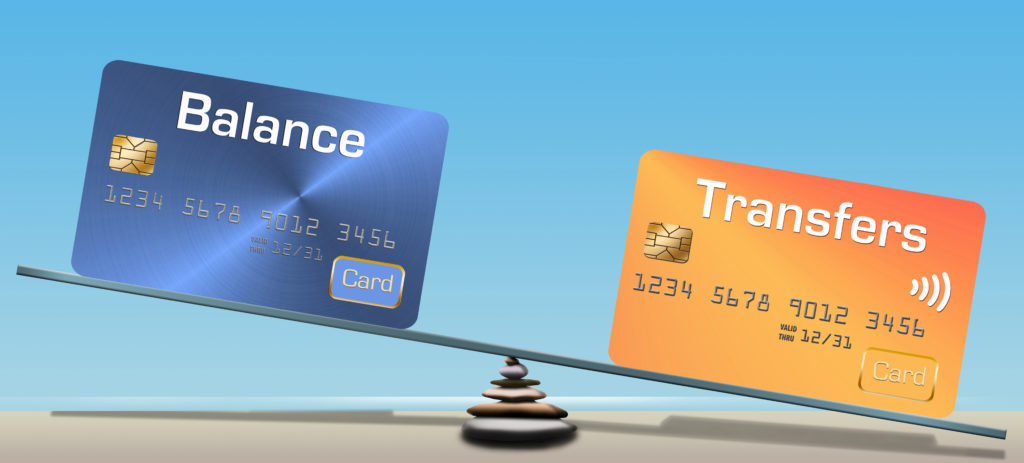Do you have credit card debt that’s just too much to handle? If so, then a balance transfer may be the right option for you. A balance transfer is when someone takes out a new loan with a different lender specifically to pay off their current loans at another lending institution. Balance transfers are often done to lower interest rates on one’s loans or consolidate debts into one monthly payment. This article will discuss what balance transfers are and whether they are worth it for borrowers like you!
What is a balance transfer, and what does it do for me?
Balance transfers are when someone takes out a new loan with another lender to pay off their current loans. This is often done to lower interest rates on one’s loans or consolidate debts into one monthly payment.
Some cards have promotional periods when they charge low or even 0% interest on your transferred balance. Some cards also charge balance transfer fees, which can cost you money upfront.
Who can apply for a balance transfer?
Balance transfers can be done by just about anyone, but there are some conditions. Applicants must have good to excellent credit and cannot currently hold a balance on their existing loan with the new lender they wish to transfer the debt from. They also need not be employed for their application to go through. Most lenders will approve applicants who meet these criteria within days of applying!
However, balance transfers may mean your credit score could drop if you’re already maxed out on loans with other companies, which could make it harder for you to get future loans or lines of credit at better rates.
How to determine if I’m eligible for a balance transfer.
If you meet the following criteria, then it may be worth applying for a balance transfer:
- You have good to excellent credit.
- Your steady income payments are reliable and not at risk of slipping behind schedule.
- You do not currently hold an outstanding loan with another lender that would likely prevent your application from being approved.
What happens after I’m approved?
Once you’re approved for a new line of credit with one lender, you can use their funds to pay off all or parts of what you owe on other debts – including student loans! Once everything has been correctly applied, you will receive a confirmation, so there’s no need to double-check yourself as this is automated by the company lending out the money.
The benefits of doing a balance transfer.
The main benefit of doing a balance transfer is saving money and getting out from under multiple debts. Transferring balances means you’ll only need to make minimum payments but still be able to afford more things because those minimums will stay manageable.
You could also find yourself with less stress overall as the number of outstanding bills goes down. Another potential perk: if you can qualify for low or no-interest rates during promotional periods (a period where interest rate charges are temporarily suspended) usually lasting six months or longer, then that would also be an advantage.
The disadvantages of doing a balance transfer.
There are some drawbacks to balance transfers – first of all; there is the transfer fee. This processing charge varies from company to company but typically ranges between three and five percent of your transferred debt. The costs can be especially high if you’re transferring large sums at once! Be sure not to take out more than what you need for this reason alone, or else your savings won’t end up being worth it in the end.
You will likely receive new bills with additional balances owed on top of what’s already outstanding, so make sure you have enough cash flow available before signing up for one. Otherwise, doing this could ruin your credit score instead of improving it by making late payments because you have too much going on financially.
It’s possible to transfer your remaining balance to a new balance transfer card, but this strategy can be risky. Not only will you take a ding on your credit report when applying for a new account, but you also run the risk of getting denied or not being approved for the amount you need.
Tips on how to decide whether or not to go through with a balance transfer.
When evaluating whether or not to do a balance transfer, borrowers need to consider the overall long-term costs of transferring their balances. For example, while you may save money now by having lower monthly payments, that doesn’t necessarily mean the new lender is offering better rates on interest charges. Therefore, you should always look at ALL fees before completing your application!
Another factor worth considering is how much time you have until any promotional rate periods are up. If these end within six months, then making minimum payments on all loans with no changes could be more beneficial since there will still be time left in those promotion terms after they expire!
There are also some critical points regarding low/no-interest transfers:
If you can make timely loan repayments and hold out for a lower interest rate, then it may be worth doing so. However, make sure to do your research first!
A balance transfer can help borrowers consolidate and pay off multiple debts in one shot. The main benefit of this is the reduced stress levels that come with having fewer bills to keep track of each month.
Another thing lenders consider when approving applicants for balance transfers: what kinds of credit card balances (or lines) they already have open. For example, suppose you’re likely to add more debt either simultaneously or shortly after completing a balance transfer. In that case, there’s less incentive for new creditors to take on even part of your existing debt load since they won’t see much relief from any repayments you’ll still need to make.
What is a balance transfer fee?
A balance transfer fee is a cost associated with transferring your credit card debt from one lender to another. It’s usually a percentage of what you’re transferring and can range anywhere from three percent up to five or six percent of the total amount being moved. These fees are typically paid upfront, but some companies will let you roll them into your loan for convenience if possible. Make sure not to be caught off guard by any additional processing costs!
Does balance transfer clear my current credit card debt?
If you’re wondering if a balance transfer will clear your current credit card debt, then the answer is: it depends. If you have an open line of credit with one company and apply for another that ALSO accepts applicants who already owe money elsewhere – You can move those debts onto their cards too! This isn’t always allowed, however, so make sure to read all terms and conditions before applying at any lenders asking about past balances or delinquent accounts on other lines of credit.
What are the typical fees associated with transferring my account?
When transferring your account from one lender to another, there’s usually some processing fee involved, ranging between three percent up to five or six percent plus additional costs depending on how much you’re moving around and how much time is left on the promotion.
What should I do if my current creditor won’t accept a balance transfer?
Suppose your current lender doesn’t allow you to move some or all of your balances over. In that case, it’s probably best not to try and fight them on this. Instead, focus more on paying off whatever debts they want to be transferred while still making timely repayments in the future! Just make sure that any new lenders show an interest in taking part in your debt load down before completing their applications for consideration.
If you’re worried about the new interest rate, it’s helpful to do the math and find out if the interest you’ll accrue will be less than the cost of another balance transfer. Alternatively, you could consider a debt consolidation loan if you won’t be able to pay down your balance within another balance transfer card’s introductory period.
Depending on your debt size and whether you will need more time than a promotional period to pay it off, consolidating debt with a personal loan might be a better solution for your needs.
Can I get a lower monthly payment with a balance transfer?
Credit card companies offer different promotional rates, which can help reduce overall repayment costs upfront, but these are limited-time offers. Suppose you’re thinking about taking advantage of a low/no-interest balance transfer. In that case, it’s best to do your research first and figure out how much cash you have until any promotional periods expire so that you can estimate what kind of total repayment costs will be after this period ends!
How do I choose which balance transfer credit card to go with?
Choosing the right balance transfer card is all about finding something that works for your current situation. For some borrowers, this might be a lower interest rate or terms of repayment, which will let them pay off their debts faster.
For others, it could simply mean getting approved for more credit cards with higher limits (and therefore more significant amounts they can move around) to reduce their monthly payments and costs overall!
What are the benefits of transferring my account?
There are many reasons why someone would consider doing an online balance transfer, particularly if you’re looking at moving large amounts over from one lender to another. Instead, it’s always best to do so through an application process because these typically don’t incur additional processing fees as third-party transfers can.
How long does it take to transfer my account?
It generally takes around five business days for any balance transfers to go through successfully, but this all depends on how much you’re moving and what kind of processing fees are involved accordingly. This is why it’s always best to plan before applying with different lenders by thinking about when your promo periods end or if there’s anything else that might affect the amount being moved!
What should I do after a balance transfer has cleared?
Once your balance transfer has gone through successfully, make sure that you continue making timely repayments so that you don’t incur any additional charges in the future. If you have multiple cards open with one lender already, too, make sure that you stick to paying off the balance transfers on their respective payment dates, which will help keep your credit rating in good standing overall!
Is there anything I can do if my new lender doesn’t accept a balance transfer?
Suppose your current account is still within its promotional period, and they don’t allow you to move some or all of it over. In that case, it might be best not to fight the lender on this. Instead, focus more on making timely repayments while looking at getting approved with other lenders instead who are willing to take part of your debt load down.
Bottom line:
Balance transfers can be a great way of reducing your monthly repayments, but they’re not always suitable for everyone. Ensure you get all the facts before applying with different lenders to find something that works best for your current situation! If you have any questions or want more information about balance transfer credit cards, please feel free to get in touch anytime. If you want to get more value from your Balance Transfer, EdFed provides Credit Card programs that show a better comparison of different cards.















